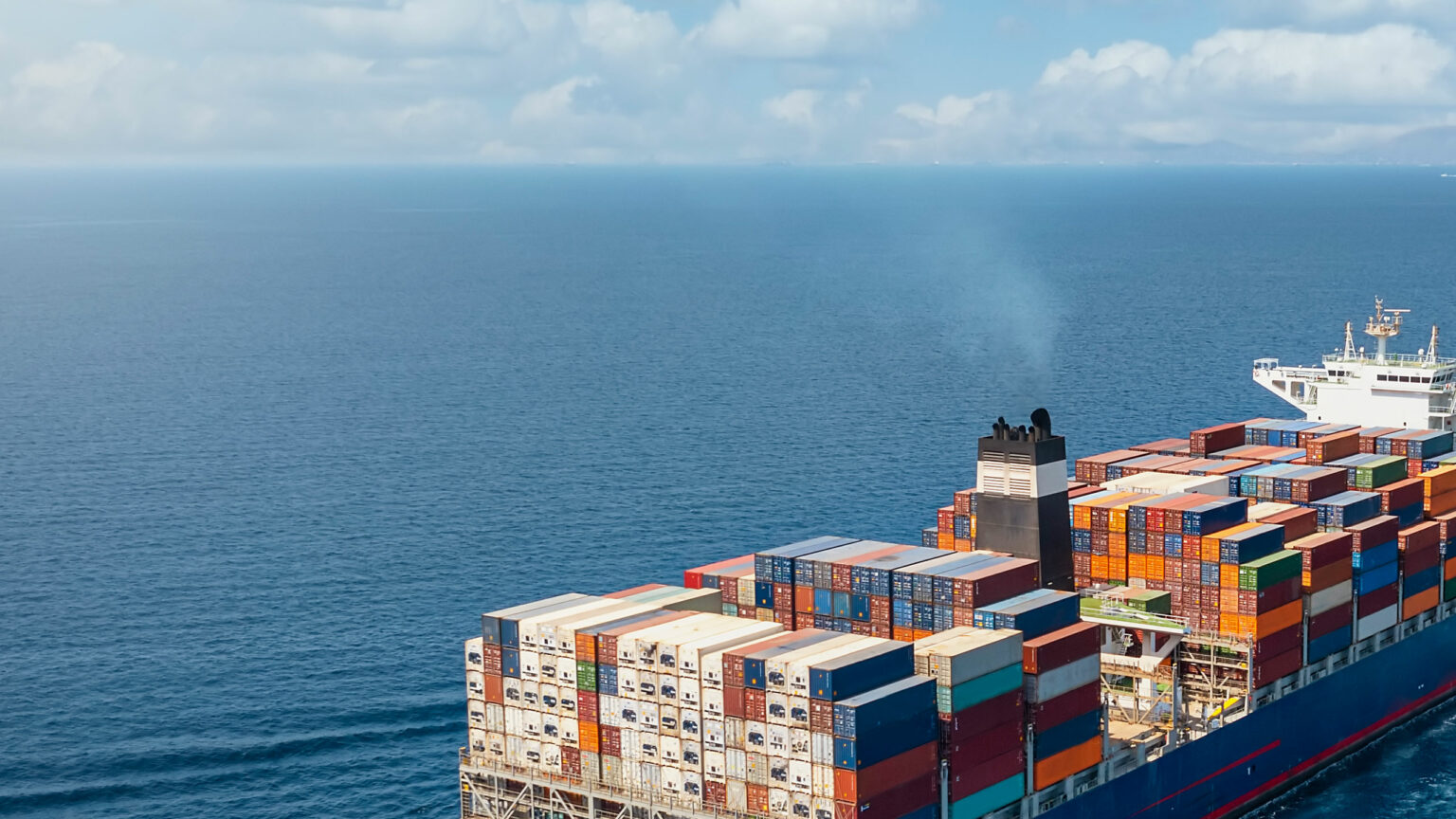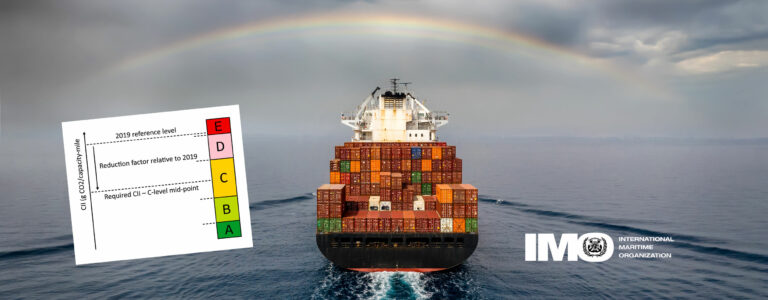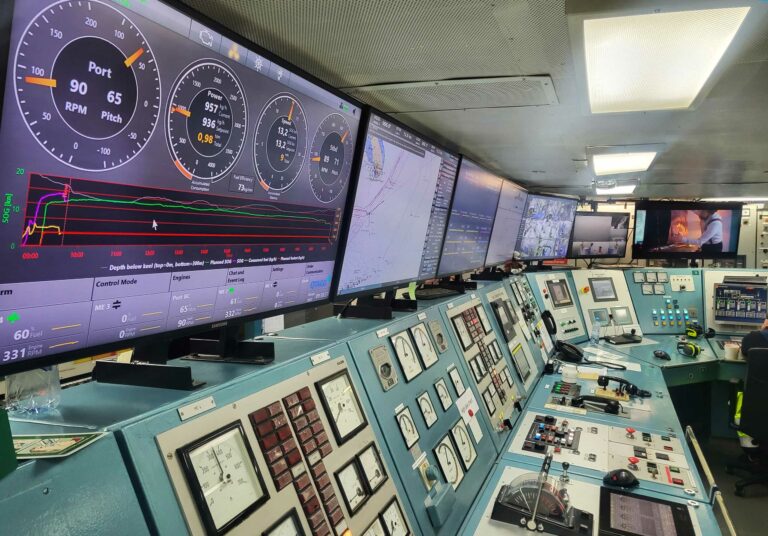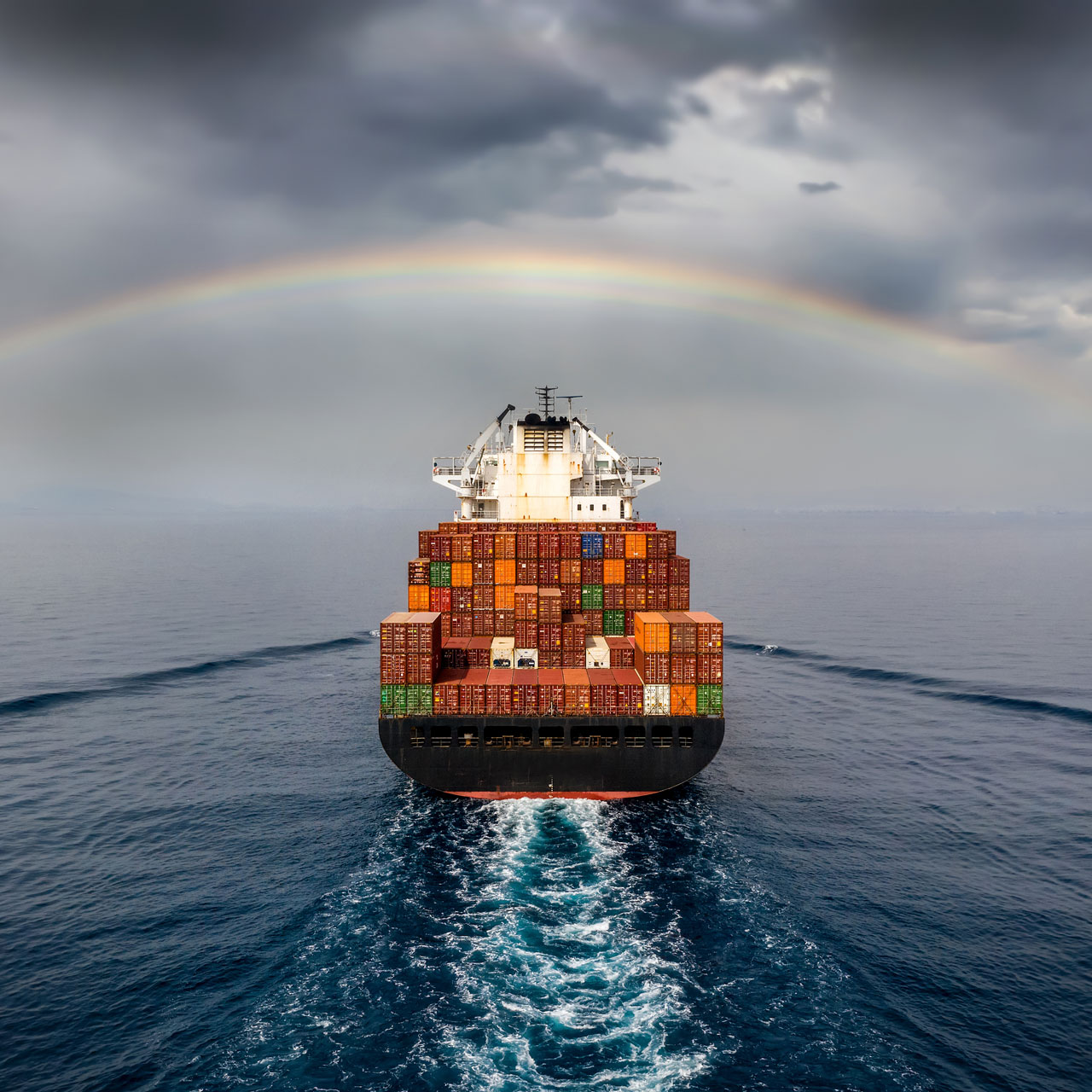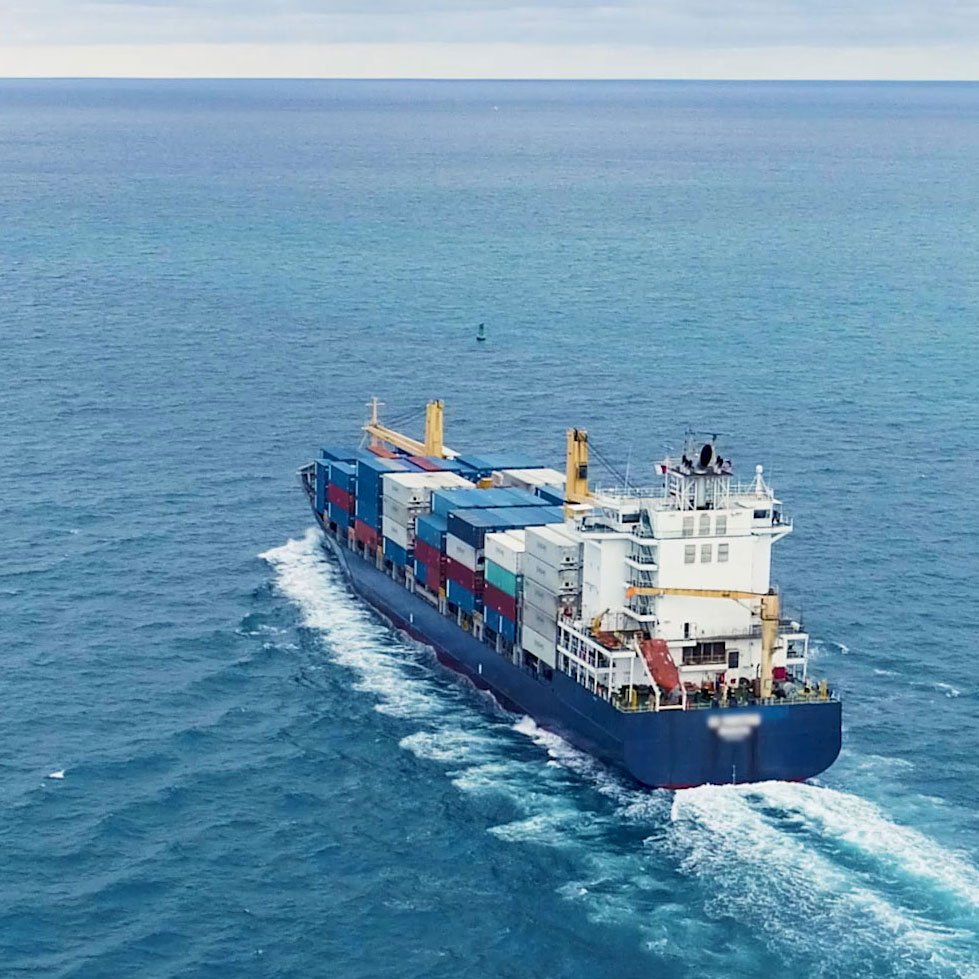To achieve and improve CII ratings shipowners will have to find ways to decrease CO2 emissions, in relation to the transport work performed. In our previous CII article, we explained how the rating is calculated.
The algorithm for attained CII describes the core issue:

Simplified, the attained CII for a ship is calculated as emissions of CO2 divided by the transport (capacity) work performed. To improve the CII rating of a ship, we either need to decrease CO2 emissions, get the ship to sail further without using more fuel – or do both.
There are a number of technical measures that a shipowner can take to improve the CII rating of a ship. Other measures require more active involvement by the ship and fleet operators. Some measures are more feasible and efficient than others. Most likely, a combination of measures will be required over time.
Use a fuel with a lower carbon emission factor
CO2 emissions are calculated based on fuel consumption times a carbon emission factor that is defined for each fuel type. Therefore, changing to a fuel with a lower carbon emission factor is one way to improve a ship’s CII rating. Fuels with radically lower emission factors however, will mostly be something to consider for newbuilds. The existing fleet will need fuels compatible with existing combustion engines and propulsion systems without too much retrofitting work.
The work of establishing standard emission factors for alternative low or near zero carbon fuels has started but is still some time away before completed and implemented in the regulatory framework. Increasingly, regulations will focus on the Well-To-Wake rather than the Tank-To-Wake emissions of fuels.
Minimize hull friction to improve CII ratings
Hull friction occurs when water comes into contact with the ship’s hull, as it moves through the water, leading to resistance that requires additional energy (fuel) to overcome. Here’s an overview of various strategies to reduce hull friction and ultimately lower fuel consumption in order to improve CII ratings:
- Hull design and shape optimization: A streamlined, hydrodynamic hull shape can significantly reduce friction. Smoother curves, reduction of sharp angles, and minimizing appendages like protruding propeller shafts can help streamline the flow of water around the ship, as can a bulbous bow.
- Anti-fouling coatings: Marine organisms such as algae, barnacles and mussels can attach to the hull, creating roughness that increases friction. Anti-fouling coatings reduce growth.
- Hull surface smoothness: A smoother hull surface reduces turbulence and friction. Sanding and polishing the hull during dry dockcan help maintain smoothness. Intermediate hull polishing while the ship is in operation is also gaining ground with new technologies and equipment developed.
- Air lubrication systems: These systems inject air bubbles or a thin layer of air under the ship’s hull, creating a boundary layer that reduces friction between the hull and water. This technique is still in development but has shown promising results in reducing fuel consumption.
- Regular hull inspection: Regular inspection of the hull’s condition and cleanliness helps detect and address fouling and damage to maintain fuel efficiency.
- Maintaining the ship’s trim and draft within optimal ranges. Improper trim and excessive draft can lead to increased drag. By distributing the cargo properly on the ship you can maintain optimal stability and trim. Unevenly distributed weight on the other hand, will increase resistance and fuel consumption.
Reduce the need for any non-propulsion power generation
The use of the auxiliary power generator adds to fuel consumption without contributing to transport work. A number of measures can be taken to minimize its load and fuel consumption:
- Choose energy-efficient lighting, HVAC systems, and appliances to lower power consumption.
- Utilize waste heat from propulsion systems or other onboard processes to generate electricity through heat recovery systems and to provide heating and hot water.
- Install energy storage systems, such as batteries, to capture excess power during low-demand periods.
- Implement an intelligent load management system to distribute power efficiently among different ship systems. Prioritize essential systems and minimize simultaneous high-power operations to prevent peak demand. Real-time monitoring and data analytics can be used to track energy consumption and identify areas for improvement.
- Integrate renewable energy sources like solar panels and wind turbines to generate power during daylight hours and when the ship is stationary.
- Use shore power instead of the onboard generator whenever possible.
Add rotary sails for supplementary propulsion power
Although not practical or possible for all ships, rotary sails offer a possible solution for reducing fuel consumption and emissions. By harnessing wind energy through spinning sail designs, ships can supplement their traditional propulsion systems. These sails capitalize on the power of wind at various angles, enabling ships to sail more efficiently even against headwinds.
Optimize propulsion efficiency to minimize fuel consumption
Monitor the ship’s engine performance and optimize settings for the operational conditions to minimize fuel consumption. Propulsion systems should be fine-tuned to operate efficiently across required load ranges and the engines should then be operated within their optimal load range to decrease fuel consumption. Ensure the propeller is properly maintained and aligned. A well-maintained propeller and shaft system can significantly impact fuel efficiency.previous
Route planning
Plan the ship’s route considering factors such as weather conditions, currents and traffic density. Choose routes that minimize resistance and avoid adverse conditions, reducing the need for excessive engine power.
Use weather routing systems that provide real-time weather data and suggest course adjustments to avoid adverse weather conditions and reduce fuel consumption.
Slow steaming and just-in-time arrival
Sailing slower, if feasible, is a sure way to decrease fuel consumption. The goal is often to maintain similar speed over the complete course of the voyage, instead of succumbing to the “hurry-up-and-wait” behavior that inevitably leads to higher fuel consumption. The optimal is to sail at the slowest speed possible that still gets the ship to its destination just-in-time for a pre-assigned time slot or at the desired arrival time.
Voyage optimization – using automation and AI to improve CII ratings
Automated eco-driving for large ships heralds a new era of maritime efficiency and sustainability. It combines route planning, slow steaming and optimized propulsion control. Voyage optimization systems use advanced technologies such as artificial intelligence, machine learning and real-time data analytics to minimize fuel consumption, reduce emissions and enhance overall environmental performance.
The system continuously collects and analyzes data from various sensors, weather forecasts and navigational inputs to make informed decisions in real-time. This allows the ship’s onboard computers to optimize route planning, adjust speed and manage engine performance to achieve the most fuel-efficient trajectory.
Additionally, automated eco-driving systems ensure optimal trim and draft adjustments, further reducing drag and enhancing fuel efficiency. They also account for factors like sea currents, wind conditions and traffic patterns, allowing the vessel to adapt to changing circumstances while maintaining efficient operations.
By minimizing human intervention in routine navigation tasks, we can avoid the hurry-up-and-wait behavior and crew members can focus on higher-level decision-making and safety-critical tasks.
Improving ship-to-shore collaboration
Changing conditions, such as congestion that can cause time slots to change, needs to be communicated to the ship efficiently and without delay. Any voyage optimization system you implement should be able to facilitate real-time updates from onshore fleet control to the captain and the on-board system. A new ETA target can then be accepted by the captain on the go, for an immediate speed adjustment and additional fuel savings.
Summary: Actions that can improve a ship’s CII rating
Changing fuel or adding supplementary propulsion
- Refurbish the ship to using a fuel with a lower CO2 emission factor
- Add rotary sails to supplement existing propulsion
Minimize hull friction
- Streamline the hull
- Add a bulbous bow
- Use an anti-fouling and low-friction hull coating
- Improve and maintain hull smoothness
- Add air hull lubrication
- Regular hull inspection and cleaning
- Ensure optimal trim and draft
Minimize auxiliary generator use
- Use energy-saving lighting, HVAC and appliances
- Recover and use waste heat
- Install energy storage solutions
- Implement load balancing
- Use shore power whenever possible
Optimize propulsion and routing
- Monitor engine performance and operate motors within their optimal load range
- Use route planning and weather routing
- Apply slow steaming and just-in-time arrival practices
- Implement a voyage optimization system with AI powered eco-driving capabilities
- Ensure efficient ship-to-shore collaboration tools and routines are in place

